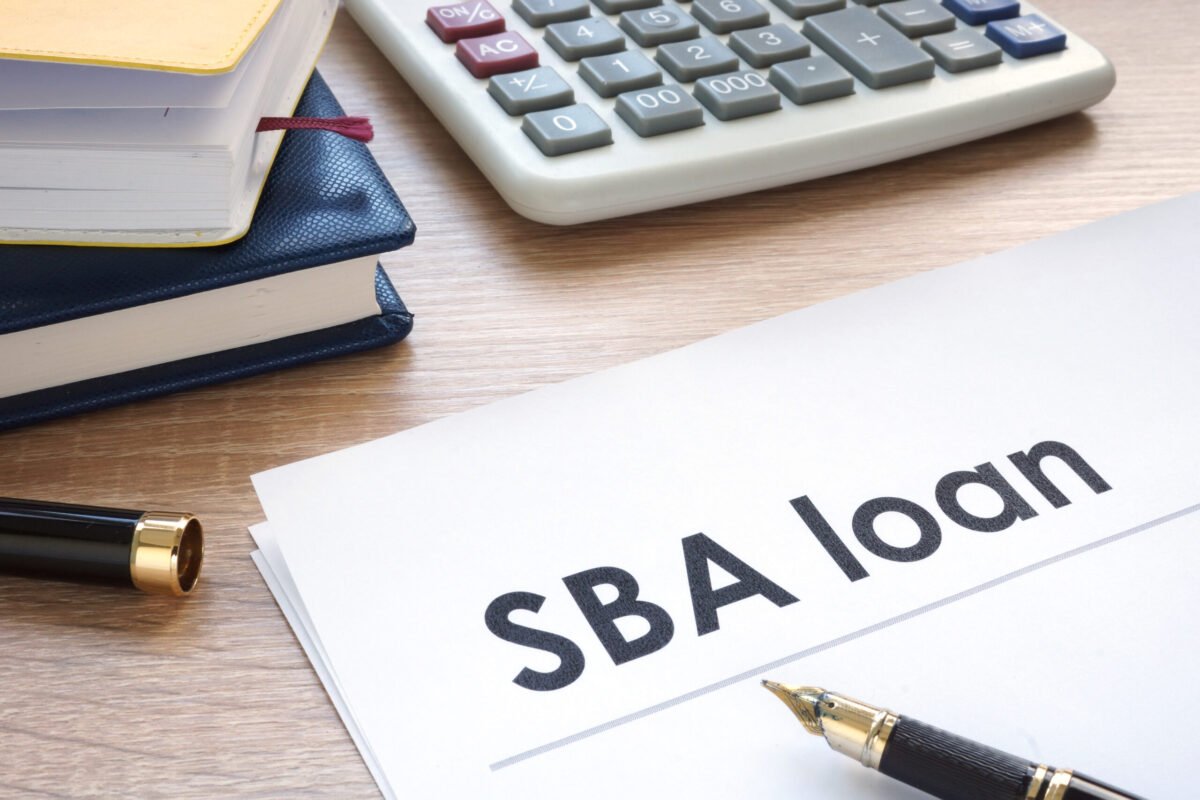
Small Business Administration (SBA) Loans
The Small Business Administration (SBA) is a U.S. government agency that supports small businesses through a variety of programs, including access to financing. SBA loans are not directly provided by the SBA. Instead, they are made by partner lenders—such as banks, credit unions, or community development organizations—and are partially guaranteed by the SBA. This guarantee reduces the lender’s risk, making it easier for small businesses to get funding.
SBA loans are known for their favorable terms, such as low interest rates, long repayment periods, and lower down payments. They can be used for various business purposes, including starting a new business, working capital, purchasing equipment, inventory, or even real estate.
How Do SBA Loans Work?
When a small business applies for an SBA loan, it applies through a participating lender. If the loan meets the SBA’s criteria, the SBA will guarantee a percentage of the loan (typically 50% to 85%). This means that if the borrower defaults, the SBA repays the guaranteed portion to the lender, reducing the lender's exposure to loss.
There are multiple types of SBA loan programs, each tailored to different business needs. The most common ones include the 7(a) Loan Program, CDC/504 Loan Program, and Microloan Program.
Types of SBA Loans
1. SBA 7(a) Loan Program
The 7(a) Loan is the SBA’s flagship and most flexible loan program. It can be used for a wide range of purposes including:
Working capital
Equipment and machinery
Real estate purchases
Refinancing debt
Inventory
Loan Details:
Maximum loan amount: $5 million
SBA guarantee: Up to 85% for loans up to $150,000; 75% for loans greater than $150,000
Repayment terms:
Up to 10 years for working capital
Up to 25 years for real estate
Interest rates: Based on the prime rate plus a markup (varies by lender and loan size)
2. SBA CDC/504 Loan Program
The 504 Loan Program is designed for purchasing fixed assets such as commercial real estate or large equipment.
Structure:
50% of the loan is provided by a private lender
40% is provided by a Certified Development Company (CDC) and backed by the SBA
10% is contributed as a down payment by the borrower
Loan Details:
Maximum SBA-backed portion: $5 million to $5.5 million (depending on the project)
Fixed interest rates
Repayment term: 10, 20, or 25 years
Must create or retain jobs or promote other public policy goals
3. SBA Microloan Program
This program provides small-scale loans for startups and small businesses that may not qualify for traditional financing.
Loan Details:
Maximum loan amount: $50,000 (average loan is around $13,000)
Provided through nonprofit community-based lenders
Repayment term: Up to 6 years
Interest rates: Typically 8% to 13%
These loans are ideal for businesses that need small amounts of capital, especially women-owned, veteran-owned, or minority-owned businesses.
4. SBA Disaster Loans
These loans provide financial assistance to businesses affected by declared disasters, including natural disasters (like hurricanes or wildfires) or economic crises (such as COVID-19).
Loan Details:
Up to $2 million in funds
Used for repairs, operating expenses, or recovery
Low interest rates and long repayment terms
Benefits of SBA Loans
SBA loans offer many advantages over conventional business loans:
1. Lower Down Payments
SBA loans typically require a smaller down payment compared to traditional loans, which can be helpful for businesses with limited cash flow.
2. Competitive Interest Rates
Because the SBA partially guarantees the loan, lenders offer lower interest rates, reducing the overall cost of borrowing.
3. Longer Repayment Terms
SBA loans offer longer terms—up to 25 years for real estate—resulting in lower monthly payments, which can ease cash flow strain.
4. Easier Qualification
The SBA guarantee gives lenders more confidence in lending to small businesses that might not otherwise qualify due to lack of collateral or limited credit history.
5. Versatile Uses
From working capital to real estate purchases, SBA loans cover a wide range of business financing needs.
Eligibility Requirements
To qualify for an SBA loan, businesses must meet the following general criteria:
Operate for Profit: Non-profit organizations are not eligible.
Be a Small Business: Must meet SBA size standards (based on industry and number of employees or revenue).
Operate in the U.S.: The business must be located and operate in the United States.
Have Invested Equity: Owners must have invested their own time or money.
Exhausted Other Financing Options: SBA loans are for borrowers who cannot get credit elsewhere.
Good Credit: Most lenders require a good personal and business credit history.
Strong Business Plan: Especially for startups or newer businesses, a clear plan is essential.
Some types of businesses are ineligible, such as those engaged in illegal activities, gambling, speculation, or pyramid schemes.
Application Process
Applying for an SBA loan can be complex and time-consuming, but it’s manageable with preparation. Here are the key steps:
1. Determine Your Needs
Decide how much funding you need and what you will use it for. This will help determine the best type of SBA loan for you.
2. Choose a Lender
You can apply through:
Banks or credit unions that participate in SBA programs
SBA-approved Community Development Financial Institutions (CDFIs)
Online lenders or SBA loan marketplaces
3. Prepare Documentation
SBA loan applications require thorough documentation, including:
Business plan
Personal and business tax returns (last 2–3 years)
Profit and loss statements
Balance sheets
Bank statements
Personal financial statements
Ownership and legal documents
Resumes of key managers
4. Submit the Application
The lender will review your application and submit it to the SBA for approval (if required). Some SBA loans, like SBA Express, have faster approval times (as little as 36 hours).
5. Underwriting and Approval
The lender and SBA will evaluate your creditworthiness, business viability, and collateral. This process can take anywhere from a few weeks to a few months.
6. Loan Disbursement
Once approved, you’ll sign the loan agreement and receive your funds. Make sure you understand the repayment terms and responsibilities before accepting.
Drawbacks and Considerations
While SBA loans have many benefits, they are not for everyone. Consider these drawbacks:
Lengthy approval times compared to conventional loans
Extensive paperwork and documentation required
Collateral may be required, especially for larger loans
Good credit is still important, even with SBA support
SBA loans are a powerful financing option for small businesses in the U.S. They offer flexible, affordable funding backed by government guarantees, making them accessible to many entrepreneurs who might not qualify for traditional bank loans.
Whether you’re launching a startup, expanding your operations, or recovering from a disaster, there is likely an SBA loan program that fits your needs. By understanding the types of loans, benefits, and requirements, you can make an informed decision and potentially secure the funding you need to grow and sustain your business.
If you're considering an SBA loan, it's a good idea to consult with a trusted lender or a Small Business Development Center (SBDC) to guide you through the process and improve your chances of approval.

